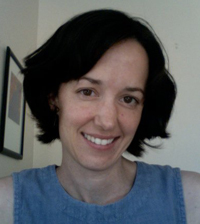 By Corrine McCarthy
By Corrine McCarthy
Assistant Professor of Linguistics, George Mason University
Morphology is the study of word structure. Though it appears on the surface that English words are irregular and idiosyncratic — go vs. went, foot vs. feet — there is a limited set of processes that allow speakers to create new words.
First, some preliminaries. All languages have words and morphemes. Words can be freely moved around in a sentence. For example, cats is a word:
I like cats.
Cats, I like. (Hamsters, I don’t.)
Cats is a complex word, made up of two morphemes; a morpheme is the smallest unit of meaning or function within a language. The two morphemes are the root cat and –s, which means ‘plural’. –s is a bound morpheme, meaning that it must attach to something else and cannot be freely moved around; I can’t just say “-s” in response to the question “Do you have one cat or more than one?” Free morphemes, on the other hand, can stand alone as words.
English often allows multiple bound morphemes within a single word by a process called affixation. Affixation is the addition of prefixes, suffixes, and infixes to a root morpheme Bound morphemes that follow the root are suffixes (things like –ful, -ly, -ness in words like hopeful, quickly, or weirdness), while morphemes that precede the root are prefixes (for example, mis- as in misunderstand).
So, in a word like mistrustful we have a two bound morphemes, the prefix mis- and the suffix -ful, surrounding the root, trust:
mis-trust-ful
Or in a word like friendliness, we have a root followed by two suffixes:
friend-li-ness
English, like many languages, sometimes uses affixation to indicate tense. Although most English words use the — ed suffix to indicate past tense (as in walked, pushed), irregular past tense is formed in various ways. Examples include the replacement of the verb with one that is very different (go vs. went — an example of suppletion), an internal change affecting the vowel (sing vs. sang), or a zero morpheme, which simply means no visible past-tense suffix is attached (put vs. put).
Children learning English, as well as adult second language learners, have a strong tendency to make irregular forms regular, yielding charming errors such as goed for went, or foots for feet. These errors show that what’s being learned is a rule, something like our brain thinking “attach –ed to make the past tense”, rather than learning past-tense verbs one at a time. Errors like these also show that children don’t necessarily imitate their parents!
How are new words formed?
President Bush used affixation to unintentionally create the word securitize (‘the process of making something secure’). New words are regularly being formed through familiar word formation processes; below are a few examples of these processes, along with some words that result from their application.
An acronym is formed out of the first letter of each word of a phrase. It’s not uncommon to hear someone lol at a good joke (from LOL — laugh out loud) or exclaim WTF when something unexpected happens. Scuba (Self-Contained Underwater Breathing Apparatus) and radar (RAdio Detection And Ranging) are examples of older acronyms that we don’t necessarily recognize as such anymore.
A backformation removes a part of the word that resembles a morpheme in order to coin a new word. For example, in the word burglar, English speakers misanalyzed the –r as an agentive suffix (a suffix that indicates someone does something), similar to the –r in writer. This process left us with the verb burgle, meaning ‘steal’. The Mitchell International Airport in Milwaukee has a lounge area just beyond security called the recombobulation area — formed by backformation from the word discombobulate where the dis- was mistakenly taken to be a prefix and then replaced with the common prefix re-. The “recombobulation area” is a place where you can get yourself organized: put your shoes back on, put your laptop back into your bag, and so on.
A blend combines two words to create a new word. Smog is a blend of smoke plus fog. Mockumentary combines mock and documentary. Jeggings are snug-fitting leggings that look like jeans. Recently, Sarah Palin inadvertently created the word refudiate by blending refute and repudiate.
Clipping is the reduction of a word into one of its component parts. The recently-coined word app meaning ‘application for a mobile device’ is clipped from application.
Compounding is the combining of two or more roots to make a new word, such as birdhouse or redneck (‘hillbilly’). A recently-formed compound is pumphead: a person who has lost mental acuity after being attached to a heart-lung machine during heart surgery.
Examples such as these illustrate the creative capacity of language. Our knowledge of morphology allows us to combine the pieces of old words to create something new.

 eNewsletter
eNewsletter